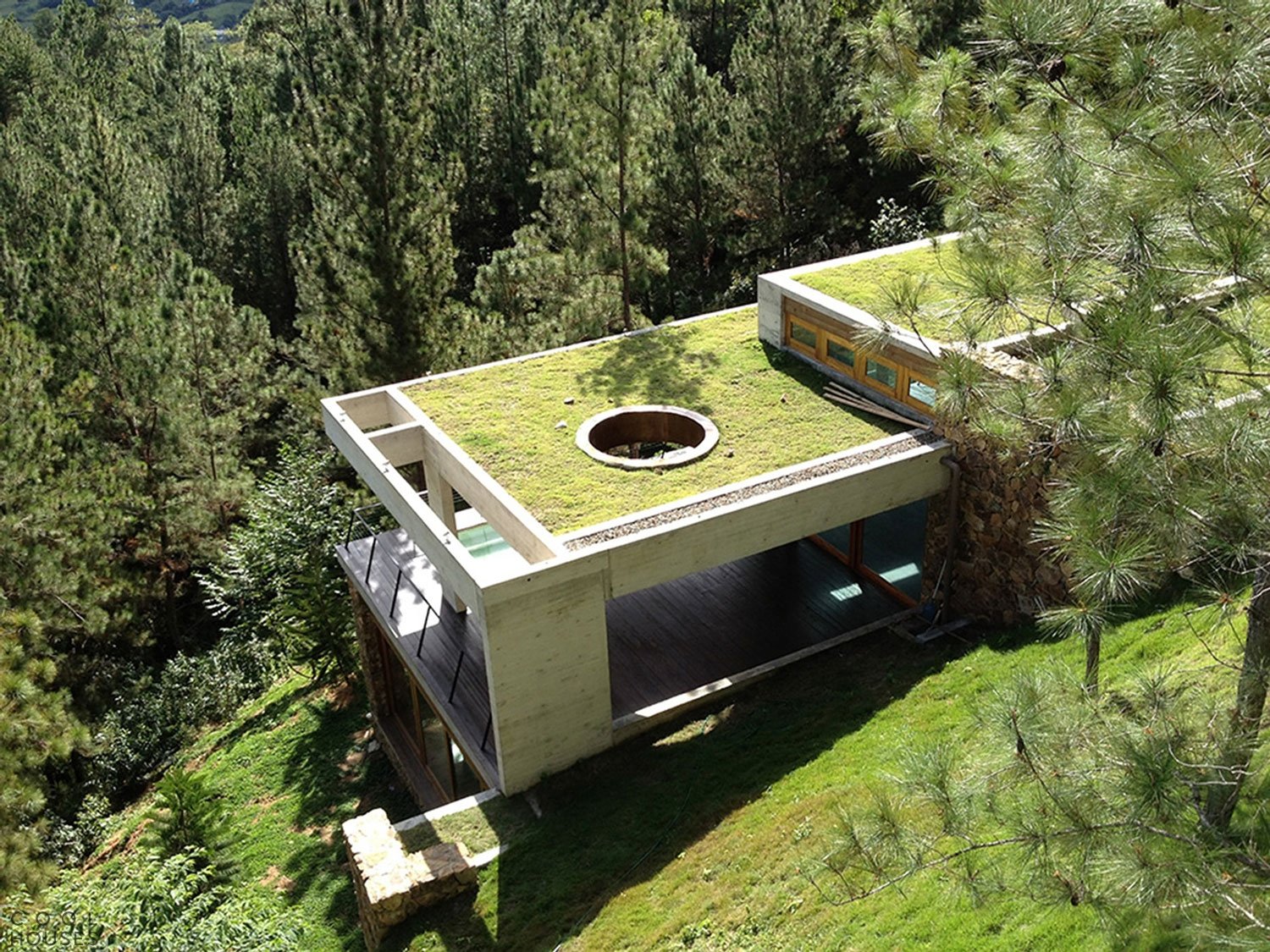#855. Green Facade: Minimalist House with Living Roof in Coniferous Forest
This modern countryside house represents an excellent example of biophilic design, where architecture organically interacts with the surrounding nature. The structure is positioned on a hillside and encircled by coniferous trees, creating a natural backdrop for the minimalist construction.
The building's facade is characterized by its laconicism and geometric clarity — a rectangular volume with a flat roof covered with living grass. The green roof not only visually integrates the building into the landscape but also provides ecological advantages. A distinctive feature of the roof is the circular opening in the center, presumably a light well or ventilation element, which adds a compositional accent.
The facade is executed in a combination of concrete surfaces and large panoramic windows, creating an expressive contrast between the massiveness of the structure and the lightness of the glazing. The emphasized horizontality of the building and the volume partially raised above the slope form a cantilevered extension with an open terrace below. The light concrete finish provides a subtle contrast with the dark wooden decking of the terrace and the greenery of the surrounding space.
The architect masterfully employed the principle of privacy and openness: the house is simultaneously protected from outside views by the forest, yet open to nature thanks to large windows and integrated open spaces. This approach highlights the contemporary tendency to blur boundaries between interior and exterior spaces in residential architecture.
